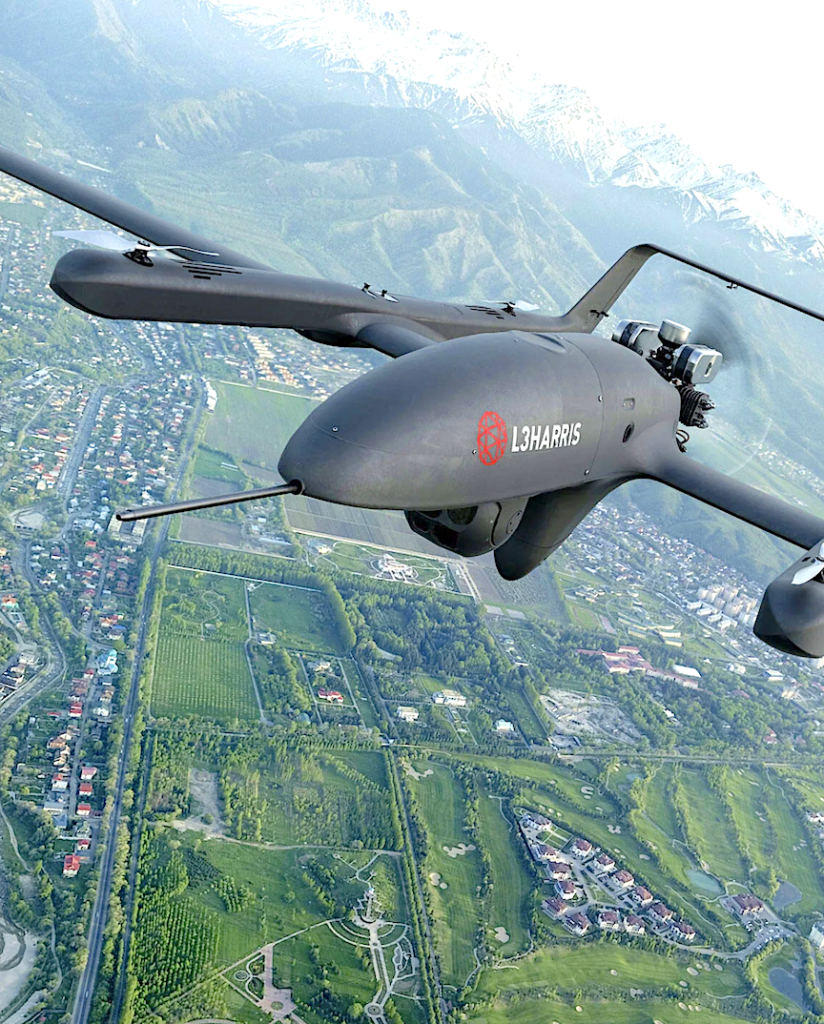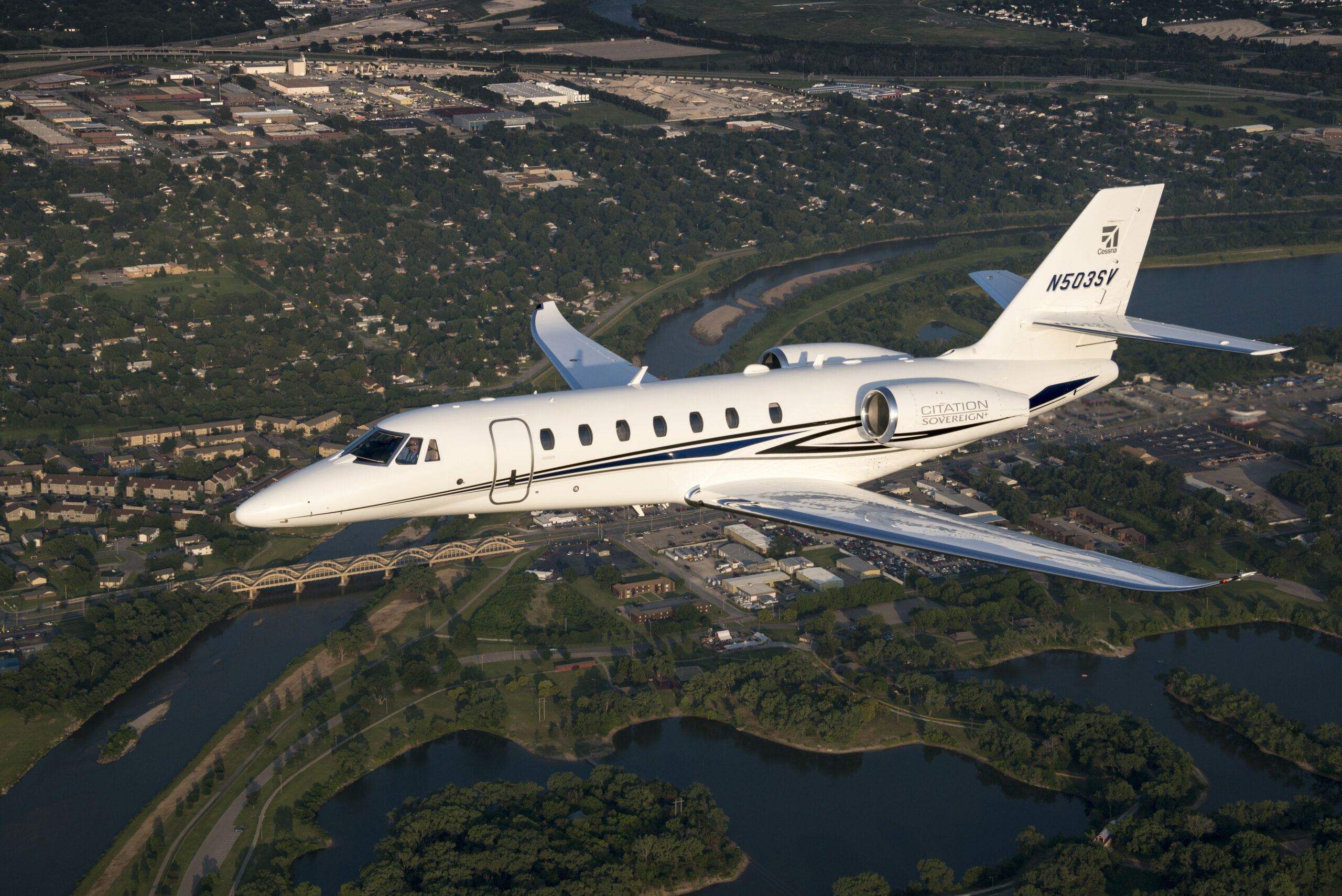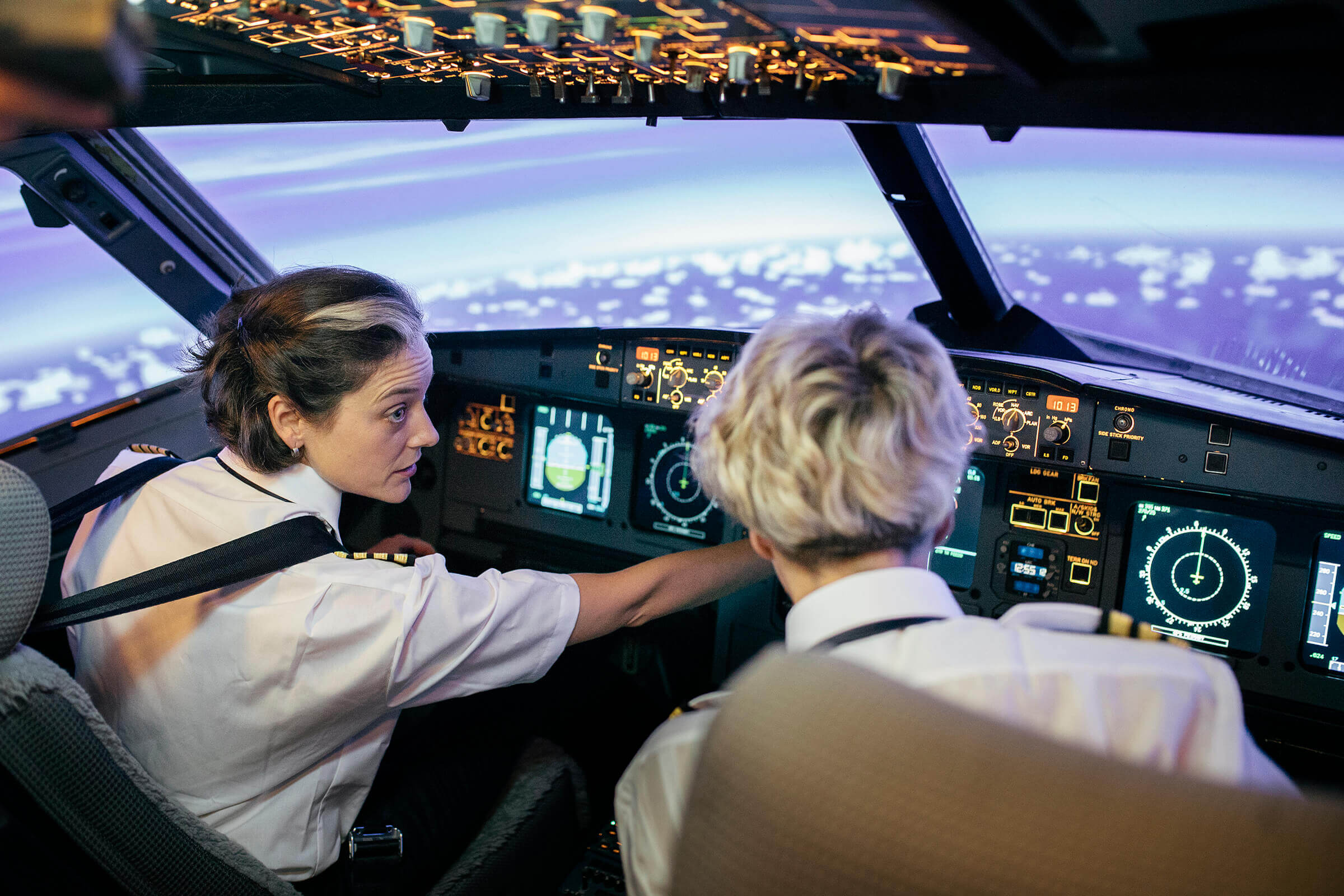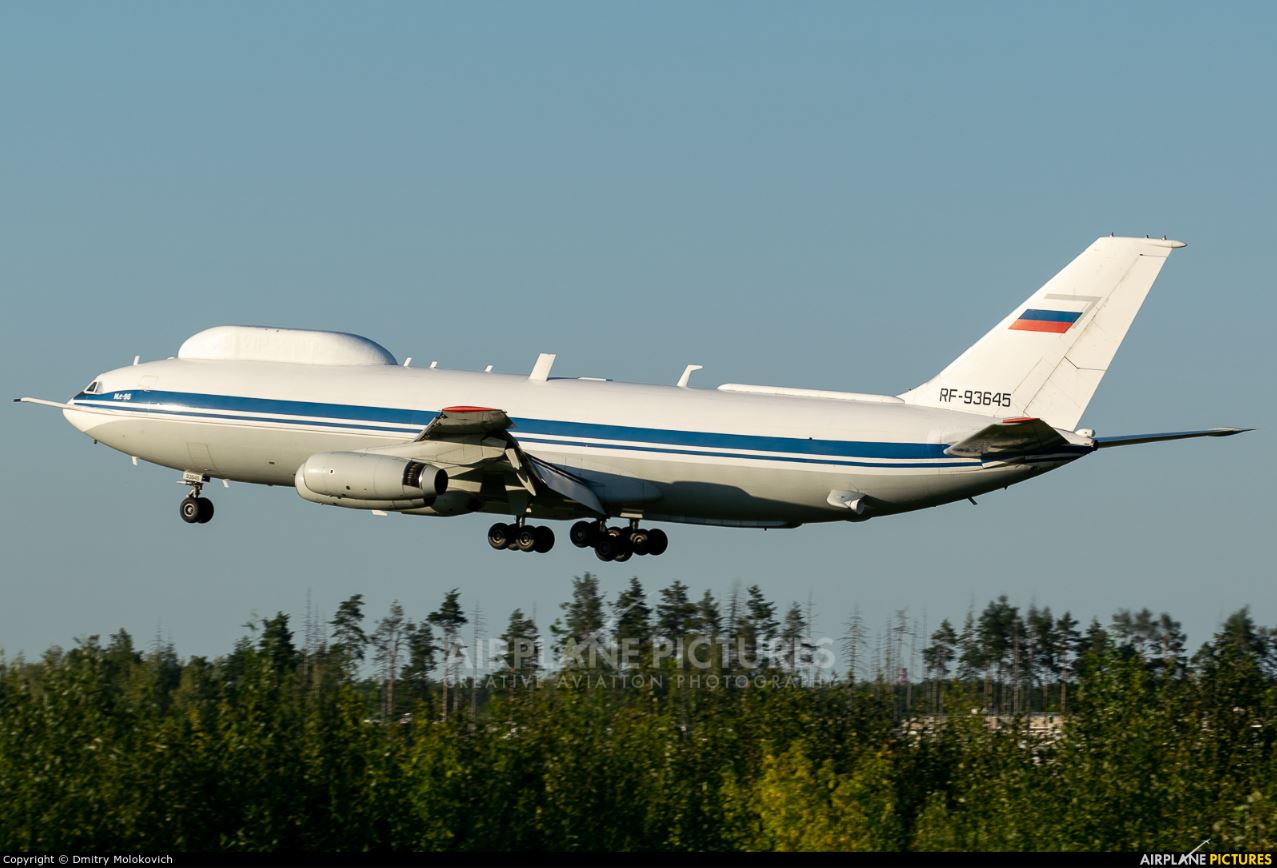Communication Aircraft - The main restriction on the ACARS system is that it uses character codes representing only printable characters. This limitation applied to all early generation data communications systems. This did not prevent the ACARS system from becoming the foundation of airline operations efficiency.
However, the development of new radio communications technology and the need to support air traffic management, calls for newer technologies to be implemented. Aircraft use AM frequencies for air-to-ground communications because AM is more resistant to noise and interference than FM is.
Communication Aircraft

The reason for this is that in AM, the amplitude (or strength) of the radio wave is varied to convey information, whereas in FM the frequency is varied. Although the Air Force is replacing its E-3s with fewer aircraft, the E-7 is based on the Boeing 737-700NG, an aircraft currently in production, and with a high readiness rate—so the net result should be more aircraft available at
What Radio Frequencies Do Aircraft Use?
any one time. The 737 airframe is also used for the C-40 Clipper VIP transport and the P-8 Poseidon maritime patrol aircraft. The outbreak of the COVID-19 pandemic has adversely affected the military aircraft communication avionics market owing to the strong disruption.
This has further hampered the availability of chips used in avionics. Owing to the rise in the cases of COVID-19, the defense industry witnessed a significant decline in the supply of military aircraft and other military gadgets and weapons.
Mode 1 was created with the intent of using analog radios incorporating a device to install a coded signal on the existing carrier wave. This mode was never carried forward as analog radios were already viewed as dinosaurs.
Further considerations brought about Mode 2 and 3 which present the position of the FAA wanting to use all new digital radios with a 25 kHz frequency spacing and the Eurocontol concept of going with 8.33 kHz frequency spacing.
Why Are Fm Frequencies More Immune To Noise Than Am Frequencies?
Read Full Market Analysis Military Aircraft Communication Avionics: by Aircraft Type (Combat Aircraft, Non-combat Aircraft, Special Mission Aircraft, Tanker and Transport Aircraft, and Others); by Component (Antenna, Transponder, Receiver, Transmitter, and Display & Processors); by Sales (OEM, and Aftermarket);
by Solution (SATCOM, VHF and UHF, and HF and MF); by Region (North America, Europe, Asia Pacific, Latin America and Middle East, and Africa) Global Industry Analysis, COVID-19 Impact, and Industry Forecast, 2018-2030 CHICAGO, Feb. 21, 2023 /PRNewswire/ -- The Global Military Aircraft Communication Avionics Market size is projected to be USD 35.27 Billion by 2030 growing at a CAGR of 4.38% from 2023 to 2030, as per a recent report by Cognitive Market Research.
In the defense industry, big data and the Internet of Things (IoT) play a vital role in technological innovations. As a result, industry participants are focusing on the incorporation of 5G capabilities. For instance, Lockheed Martin and Intel have demonstrated 5G capabilities for its use in military aircraft.
For aviation purposes, where obstacles are not as often a problem, this also holds because AM frequencies are able to change their amplitude (or strength) in order to better transmit. Additionally, AM frequencies are able to travel further distances due to their longer wavelength, which allows them to better bounce off the ionosphere and travel long distances.
What Is The Best Frequency To Listen To Aircraft?
Cognitive Market Research has evolved as one of the leading market research and consulting firms providing services across multiple domains. Our team of researchers gathers and analyzes data about customers, competitors, distributors, and other market actors and forces operating across the value chain.
As a market research company, we gather information about the target market and end-use industries to verify the complete journey of the product or service in the global market. It helps our readers understand the demand and viability of their product/service and how it might perform in the real world and help them to build business strategies accordingly.
A ceramic or crystal microphone is relatively inexpensive, provides a good frequency response and has a high output level. On the down side, these devices are more susceptible to mechanical shock damage and in some cases, may deteriorate in high temperature and humidity conditions.
Moreover, AM signals are able to penetrate through atmospheric interference and clouds better than FM (frequency modulation) signals. This makes it more reliable for aviation communication to control towers and to other planes, especially in low visibility or bad weather conditions.

What’s New With The E- Wedgetail?
AM signals are able to travel greater distances than FM signals are. Range capabilities depend upon the wavelength used, so it makes sense that AM frequencies (with their longer waves/lower frequencies) would be able to pass through obstacles, resulting in a greater range.
Aircraft with ACARS can exchange data messages via a network of automated ground stations incorporating internal computers. Airlines first used the data link system to send movement reports to the ACARS service processors using the telex formats that operators had previously used to send those reports.
ACARS are widely used today with airborne installations exceeding 10,000 aircraft. Perhaps you've had the opportunity to notice that "old school" FM radio stations don't broadcast nearly as far as AM radio stations do. In addition, AM's longer waves are able to reflect off of the stratosphere, allowing for even greater range.
The ICAO set January 1, 1995 as the date where after no manufacturer could sell non-compliant equipment, and by January 1, 1998, all aircraft should be in compliance. It is important to understand that member states have the ultimate authority to set the date for FM Immunity to be implemented, and in most cases, more relaxed schedules have been adopted.
Jim Sparks has been in aviation for 30 years and is a licensed A&P. His career began in general aviation as a mechanic, electrician and avionics technician. In addition to extensive hands on, Jim created and delivered educational programs for several training organizations and served as a technical representative for a manufacturer of business jets.
Currently when not writing for AMT, he is the manager of aviation maintenance for a private company with a fleet including light single engine aircraft, helicopters, and several types of business jets. The FAA and Eurocontrol are in the process of creating a mutually agreeable "Future Communications" study that will address the requirements for a global future communications system to enable the implementation of enhanced ATM applications from today through 2030.
Did you know? – The first use of AM radio in aviation was in 1920 when a U.S. Navy seaplane used a new AM radio compass to locate and fly to a Navy ship nearly 100 miles offshore.if(typeof ez_ad_units != 'undefined'){ez_ad_units.push([[300,250],'travelonthefly_com-medrectangle-3','

ezslot_4',630,'0','0'])};__ez_fad_position('div-gpt-ad-travelonthefly_com-medrectangle-3-0'); ACARS units are connected to a VHF radio and in many cases, interfaced with satellite systems. This type of data communications is sent via conventional VHF radio waves that are received through a network of ground stations linked via a terrestrial network to a centralized data link service processor.
This is what provides the connection to the ground systems of the users. OEM sales dominate the market in terms of revenue model. This can be attributed to the fact that they have complete control in designing, manufacturing, and operating, through which OEMs can paint a complete picture of the asset and use this to analyze performance.
Hence, revenue generated by OEMs is the highest. The new HF radios can switch between voice and data mode using the same components, but they are required to give voice communications precedence over data link. This has a tendency to limit the HFDL availability.
This is not a commonplace application. VHF Digital Link (VDL) was put in motion by 1991 through the effort of the Aeronautical Mobile Communications Panel (AMCP) with a plan to increase the capacity of the VHF band;
and develop a standard for an Aeronautical Telecommunications Network (ATN) data link service using VHF radio. Transceivers can be considered "computers" — that is to say they receive and process information from a variety of sensors and provide an appropriate output.
Some of the sensors needed for a communication radio to operate include a frequency selector, microphone, antenna coupler, and an antenna. The antenna could also be considered a load during the transmission phase of operation as a speaker or headphone could be during reception.
Another means of analysis is to see if the signal can be heard on the headset. In many cases, headphones receive their input directly from the pre-amplified output of the receiver. So, if the headsets work and the cockpit speakers don't, the problem may be the audio amplifier and not the transceiver.

Crystal and ceramic microphones operate in a similar manner. Both use a piezo-electric principle — the sensor element vibrates at a specific frequency while an external force (in this case, a sound wave), is applied to the sensor at the rate the vibration changes.
This produces a changing frequency, which is then delivered to the transmitter or audio amplifier. Each type of microphone has its own advantages and disadvantages. For example, a dynamic microphone typically has a rugged construction, high output levels, lightweight, wide frequency response, and low hum pickup.
The capture effect of FM would prevent weaker stations from being blocked out by receiving stronger stations. VHF AM is the frequency used by aviation voice radios. AM allows multiple stations to be received on the same channel.
VHF Digital Link Mode 2 (VDL-2) was conceived in the early 1990s as a method of providing high-speed data communications to aircraft. From the outset VDL-2 was intended to support critical safety Air Traffic Control communications.
In addition, airline operational data would also be supported by VDL-2; a service traditionally supplied using ACARS. Most VHF Communication Transceivers will require a fairly simple change in order to comply with the recommended criteria. In some cases, adding a discrete filter to the RF input to the first stage of the signal amplifier, and a minor circuit change to compensate for signal loss is all that is required.
It is recommended that these modifications be carried out by a qualified and authorized shop. The Air Force should receive its first E-7s in 2027. It's not clear how, if at all, American E-7s will differ from their Australian, Turkish, South Korean, and U.K.
counterparts, but the fact that the E-7 is also in service with those countries lowers risk and allows the Air Force to get the planes more quickly. One thing that might change: the E-7's namesake, Wedgetail, is Australia's largest bird of prey.

Whether or not the name will carry over to the American E-7 fleet remains to be seen. Airborne early warning and control (AWACs) aircraft like the E-3 and E-7 were originally built as flying radar stations, using their large, powerful radars to detect enemy aircraft before a smaller, less powerful fighter-mounted radar could do so.
This eventually led to the tactic of having friendly fighters switch off their radars, altogether—which could be detected by enemy forces—and relying on cues from AWACS planes. This can often result in a nasty surprise for enemy planes, as American fighters that know exactly where they are spring out of nowhere.
The E-7 is even a little bit of a spy plane. Unlike the E-3, the E-7 can also perform electronic intelligence (ELINT) gathering missions, vacuuming up enemy surveillance, fire control, or other radar transmissions for analysis.
These signals can be analyzed to determine how to identify, keep track of, and even jam enemy radar systems in a wartime situation. Aircraft have been able to carry out voice and data communications via the Inmarsat satellites for more than 25 years.
Until then, this satellite constellation was intended to provide communication services to ships. The number of aircraft currently equipped to use Inmarsat has exceeded 3,500 and is made up of airliners, business jets, and government aircraft.
Controllers on the ground used to handle AWACS missions by using data from a ground-based radar, or on an ad-hoc basis with mission pilots themselves. U.S. forces in particular, however, tend to operate overseas, far from the continental United States, and even then often far from nearby friendly air bases.
This makes AWACS planes prime targets in a shooting war with a peer-level adversary, as removing them from the picture can cripple an air force's ability to fight. China's new PL-15 air-to-air missile, with a range of up to 124 miles, is designed to shoot down AWACS planes flying behind the main air battle.
When a radio wave is affected by noise or interference, it can cause the frequency to shift, which can make the transmission harder to understand. With AM, the noise or interference is less likely to affect the amplitude of the signal, so the transmission is still relatively easy to understand.
High Frequency radio data link has been found to provide better availability than HF voice on trans-Polar routes beyond the 80-degree North/South limit of Inmarsat satellite coverage. The HFDL capacity is only limited by the frequencies available in the HF band.
The allocation of HF frequencies to data link has required a very complex co-ordination process and the system will quickly reach its limits.
aircraft communication systems, aircraft radio monitoring, aircraft communications live, aircraft radio communications, aircraft tower communications, aircraft hf communication system, aircraft radio communication system, monitoring aircraft communications
